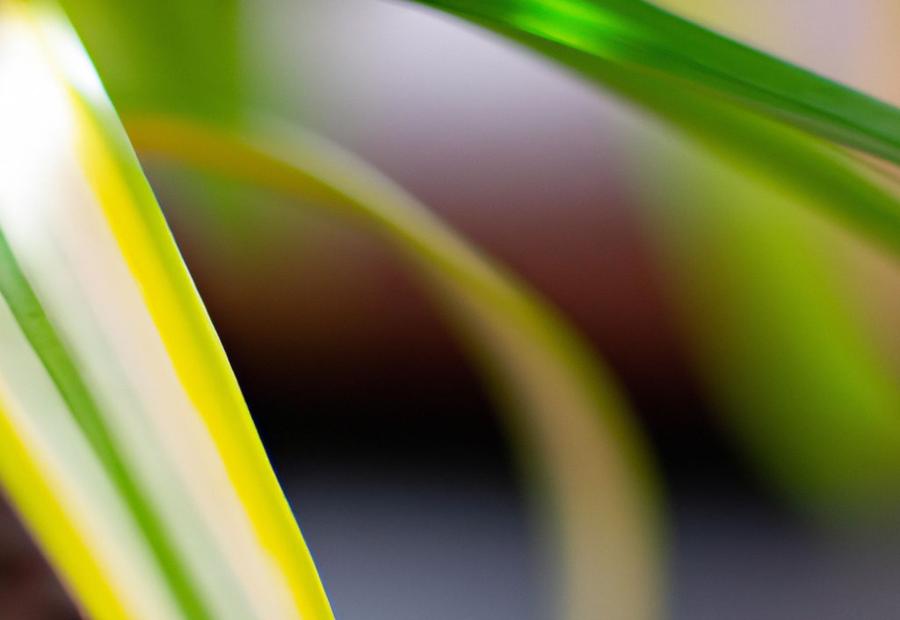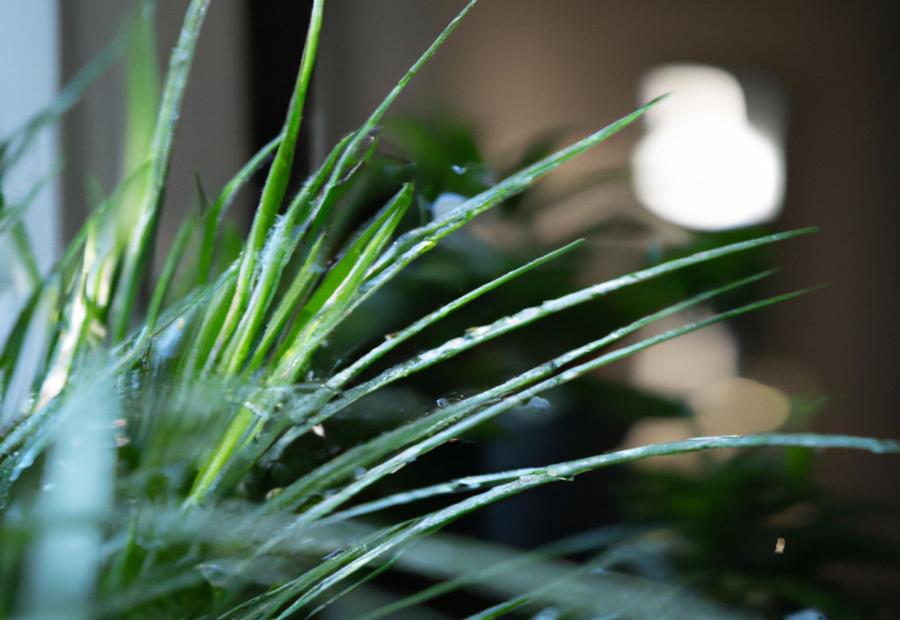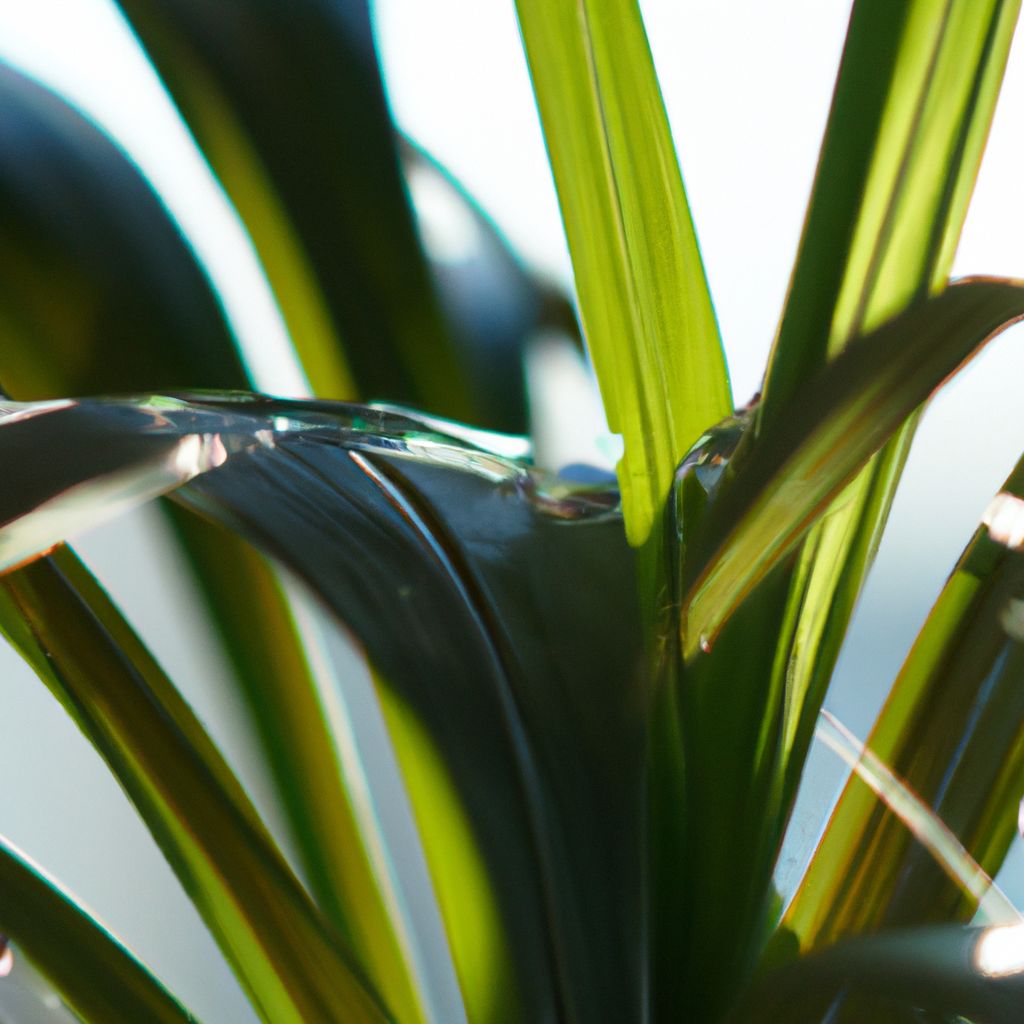Spider plants, scientifically known as Chlorophytum comosum, are popular houseplants known for their striking appearance and air-purifying qualities. These plants are relatively low-maintenance, but proper watering is crucial for their health and growth. Understanding the watering needs of spider plants will help ensure their well-being.
When it comes to watering spider plants, it’s essential to find the right balance. Overwatering can lead to root rot and other issues, while underwatering can cause the leaves to wilt and dry out. To determine the watering requirements, factors such as humidity, temperature, and soil conditions need to be taken into account.
Knowing how often to water spider plants is key. While the frequency may vary depending on environmental factors, a general guideline is to water them when the top inch of soil feels dry to the touch. This prevents overwatering and allows the roots to receive adequate moisture.
In terms of the amount of water needed, spider plants prefer to be evenly moist without being waterlogged. When watering, make sure to thoroughly saturate the soil and allow any excess water to drain away. This ensures proper hydration while preventing water from pooling around the roots.
As for the watering method, using room temperature water and watering from the top is recommended. This allows the water to reach the root system and ensures all parts of the plant receive moisture. Avoid spraying water directly on the leaves, as this can lead to fungal growth or damage the foliage.
Overwatering spider plants can result in root rot, which is characterized by yellowing leaves, a soggy soil texture, and a foul odor. On the other hand, underwatering can lead to wilting leaves, brown tips, and dry soil. It’s important to recognize these signs and adjust the watering routine accordingly.
To maintain healthy spider plants, it’s also essential to provide proper lighting, adequate humidity, and regular fertilization. By understanding the specific needs of spider plants and following proper care guidelines, you can ensure their growth and vitality.
Watering Needs of Spider Plants
When it comes to the watering needs of spider plants, there are several factors to consider. Environmental conditions and the size of the plant can both play a role. Here are some important points:
- Frequency: Spider plants generally prefer to be watered when the top inch of soil feels dry to the touch. As a general rule, aim to water them every 1-2 weeks.
- Watering amount: It’s important to thoroughly moisten the soil when watering, allowing water to drain out from the bottom of the pot. Avoid overwatering, as too much moisture can lead to root rot.
- Water quality: Spider plants are not very picky about water quality, but using filtered or distilled water can help prevent mineral deposits from building up on the leaves.
- Seasonal considerations: During warmer months, spider plants may need more frequent watering because the soil tends to dry out faster. Conversely, during colder months when growth slows down, they may require less water.
- Humidity: Spider plants appreciate higher humidity levels, so misting the leaves or placing a tray of water nearby can create a more favorable environment for them.
By following these guidelines, you can ensure that your spider plants get the proper watering they need to thrive.
How Often Should Spider Plants Be Watered?
Spider plants should be watered every 1-2 weeks, or when the top inch of soil feels dry.
How often should spider plants be watered?
Overwatering can lead to root rot, so it’s important to allow the soil to dry out between waterings.
The frequency may vary depending on factors such as temperature, humidity, and the size of the pot.
It is better to underwater than to overwater spider plants as they are more tolerant of drought than excess moisture.
When watering, pour water directly into the soil until it starts to come out of the drainage holes at the bottom of the pot.
This ensures that the roots receive enough moisture without creating stagnant water.
It’s important to note that the watering needs of spider plants may change during different seasons, so it’s helpful to monitor the moisture levels regularly.
To determine when it’s time to water, you can also check the weight of the pot.
If it feels light, it’s a sign that the plant needs water.
Remember also to consider the specific environment and conditions in which your spider plant is growing.
With these guidelines, you can ensure that your spider plant receives the appropriate amount of pruning for spiderwort to thrive.
How Much Water Does a Spider Plant Need?
Spider plants require a moderate amount of water to thrive and stay healthy. How much water does a spider plant need? To determine the water requirements of a spider plant, several factors should be considered.
One important factor is the moisture in the soil. Spider plants prefer well-draining soil that is slightly moist. It’s crucial not to overwater them as this can lead to root rot. It is recommended to allow the soil to dry out slightly between waterings.
Another factor to consider is the size of the plant. Larger spider plants generally require more water compared to smaller ones. As the plant grows, its water needs increase accordingly.
Environmental conditions also play a role in the water requirements of spider plants. Factors such as temperature, humidity, and sunlight can affect their water needs. Spider plants thrive in moderate humidity levels and prefer indirect sunlight.
Seasonal changes also influence the water needs of spider plants. During the growing season, when there is increased growth and higher temperatures, spider plants may require more water. In contrast, watering can be reduced in the winter months when growth slows down.
In general, it is advisable to water a spider plant when the top inch of the soil feels dry to the touch. This usually occurs every 1-2 weeks, depending on the specific conditions mentioned earlier. To avoid overwatering, proper drainage is essential, allowing excess water to drain out of the pot. Remember, it is better to underwater a spider plant than to overwater it. By monitoring the soil moisture and adjusting the watering accordingly, you can provide the appropriate amount of water for your spider plant’s specific needs.
What is the Best Watering Method for Spider Plants?
When it comes to spider plants, the best watering method is crucial. So, how do you ensure that your spider plants receive the right amount of water without overdoing it? Let’s break it down:
- Watering frequency: To determine when to water your spider plants, simply check if the top inch of soil feels dry to the touch.
- Watering amount: When it’s time to water, make sure you thoroughly saturate the soil until water drains out of the pot’s bottom. This ensures that the roots get the necessary moisture.
- Watering technique: To avoid damaging the leaves, it’s best to water spider plants at the base. This allows the water to penetrate the soil and reach the roots.
- Drainage: Adequate drainage is essential for spider plants, so make sure your pot has proper drainage holes to prevent water from pooling at the bottom, which can lead to root rot.
- Environmental factors: Keep an eye on the temperature and humidity levels in your home. Spider plants prefer moderate temperatures and humidity, so adjust your watering schedule accordingly.
Remember, overwatering is a common mistake when caring for spider plants. It’s important to find a balance and avoid excessive watering as it can harm the overall health of the plant by causing root rot.
Signs of Overwatering Spider Plants

Photo Credits: Allotinabox.Com by Joseph Torres
Signs of overwatering spider plants include:
- Wilting leaves: Overwatered spider plants may have leaves that appear droopy and limp. This is a sign that the roots are being deprived of oxygen due to excessive moisture.
- Yellowing leaves: When spider plants receive too much water, the leaves may turn yellow. This is because the roots can become waterlogged and unable to absorb nutrients properly.
- Root rot: Excess water can lead to root rot, which is characterized by dark, mushy roots. If the roots of your spider plant appear unhealthy or have a foul odor, it may be a sign of overwatering.
- Pest infestation: Overwatered spider plants are more susceptible to pests, such as fungus gnats or mealybugs. These pests thrive in moist conditions and can damage the plant.
- Mold or mildew growth: Excessive moisture can create a favorable environment for mold and mildew to grow on the leaves or soil surface. If you notice fuzzy growth or a musty smell, it could indicate overwatering.
- Slow growth: Spider plants that are constantly overwatered may exhibit stunted or slow growth. The excess water inhibits nutrient absorption and can hinder the plant’s overall development.
Monitoring the moisture levels of your spider plant and adjusting watering accordingly can help prevent overwatering and maintain a healthy plant.
Signs of Underwatering Spider Plants

Photo Credits: Allotinabox.Com by Scott Miller
Signs of underwatering spider plants include:
- Wilting leaves: When spider plants are underwatered, their leaves may become droopy and wilted. This is a clear sign that the plant is not receiving enough water.
- Dry soil: Underwatered spider plants will have dry soil. You can check the moisture level of the soil by sticking your finger about an inch deep into the soil. If it feels dry, the plant needs to be watered.
- Brown tips: Another sign of underwatering is the browning of leaf tips. When spider plants do not receive enough water, the tips of their leaves may turn brown and crispy.
- Slow growth: If a spider plant is not getting enough water, it may also exhibit slow growth. Lack of water can hinder the plant’s ability to take in nutrients and grow properly.
- Leaf drop: In severe cases of underwatering, spider plants may start shedding their leaves. This is a defense mechanism to conserve water and energy.
It is important to regularly check the soil moisture and water spider plants accordingly. Adjust your watering routine to ensure the plant receives enough water without overwatering it.
Tips for Watering Spider Plants
When it comes to watering spider plants, here are some useful tips to ensure their health and vitality:
- Watering frequency: Spider plants prefer to be kept slightly moist but not overly saturated. Follow a watering schedule of once every 1-2 weeks, allowing the soil to dry out between waterings.
- Water quantity: When watering, aim to evenly moisten the soil. Avoid overwatering as it can cause root rot. Always check the soil’s moisture level before watering.
- Watering method: It is recommended to water spider plants at the base, near the soil, rather than directly on the leaves. This helps prevent fungal diseases and keeps the foliage dry.
- Drainage: To allow excess water to escape, ensure that your spider plant’s pot has drainage holes. Standing water can be harmful to the plant’s roots.
- Environmental factors: Take into consideration the temperature and humidity levels in your home. Spider plants thrive in temperatures between 60-80 F (15-26 C) and appreciate moderate humidity.
- Indicators for watering: Keep an eye out for visual cues from the plant, such as drooping or wilting leaves. These signs may indicate that your spider plant needs to be watered.
By following these tips for watering spider plants, you can maintain their health and promote optimal growth.
Additional Care Tips for Spider Plants

Photo Credits: Allotinabox.Com by Paul Martinez
“
Here are some additional care tips to keep your spider plants healthy:
”
These additional care tips for spider plants will help you ensure that your plant remains healthy and thrives in your home or garden environment.
Frequently Asked Questions
How much water does a spider plant need?
Spider plants should be watered when the top two inches of soil feel dry.
How often should I water my spider plant?
Watering frequency for spider plants depends on various factors such as pot size, pot type, potting mix type, light levels, temperature, and humidity. It is best to use the finger test and water when the top inch of soil feels dry.
Can I use a soil moisture meter to determine when to water my spider plant?
Using a soil moisture meter is not recommended, as they can be unreliable and lead to over or under-watering. The finger test is a better method to determine when to water.
What kind of water should I use to water my spider plant?
Spider plants can be sensitive to fluoride in tap water, so it is recommended to use purified, filtered, or distilled water.
How should I water my spider plant?
When watering a spider plant, thoroughly moisten the potting soil and allow excess water to drain away. Ensure that the pot has drainage holes to prevent root rot.
Can spider plants be watered on a strict schedule?
Watering spider plants should be based on the plant’s needs rather than following a strict schedule. Factors such as pot size, pot type, light levels, temperature, and humidity should be considered when determining watering frequency.

